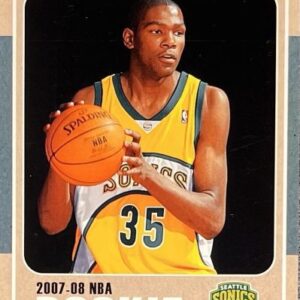In the grand tapestry of collectible sports cards, few artifacts resonate quite like the 2001 Upper Deck Tiger Woods rookie card. A vivid snapshot of a golf legend poised in his prime, this card has done more than capture an athlete’s moment; it has secured its place in the annals of sports collectibles history. With Tiger Woods fresh off a string of victories, the early 2000s saw golf ascend into mainstream consciousness, catapulted by the prowess of a man in a red shirt and black pants whose dominance was unparalleled.
The allure of this particular Tiger card lies in its simplicity and recognition. Much like Tiger’s swing, the card is designed with an economy of motion and a clarity of purpose. The layout is straightforward, radiating an instantly recognizable aura, even to those who might not frequently leaf through golf cards. This card transcends being a mere piece of memorabilia; it’s a cultural artifact, one that answers the question, “What does a Tiger Woods rookie card look like?” without the need for additional context or elaboration.
Collectors are often on the hunt for what is referred to as “blue chip” cards in the world of collectibles, and this Tiger Woods rookie stands as a prime example. There exists just the right balance between supply and demand, allowing eager collectors to procure one without feeling like they’re chasing unicorns, yet maintaining a vibrant market where mint specimens don’t spend long on shelves. The price ranges reflect this stability, with PSA 10 graded copies reliably selling anywhere between $300 to $350. Sure, quieter nights might see auctions end a smidge lower, yet the overall rhythm of sales sings a song of consistency.
For those who prefer their data visualized in charts rather than anecdotes, tracking tools like Card Ladder provide backing to the narrative. Its records mirror the eBay pulse with sales straddling the $220 to $325 range, underscoring a predictability that savvy collectors gravitate towards. Such trends allow for budgeting experiences that feel rewarding rather than speculative, ensuring that patience and strategy yield dividends in this realm governed by cardboard treasures.
The card’s endurance in popularity is partly attributed to its seminal place in Tiger’s storied card lineage. It is not some fleeting parallel variant nor an obscure promotional card. It is the definitive base rookie, emerging from the inaugural product that brought golf card collecting into widespread vogue during that era. The elegance of simplicity cannot be overstated here; it is the flagship piece, recognizable at a glance to any who cherished the resurgence of golf as a collectible category.
A dance of population statistics and condition dynamics helps maintain this card’s stature. While there are ample graded copies saturating the market, the truly pristine ones don’t feel arbitrary when held. Issues such as centering misalignments, corner wear, and the faintest of surface lines remind us that perfection commands a premium. Collectors know that the leap from PSA 9 to PSA 10 isn’t just a matter of numbers but of quality and presentation.
The visual design of the card has aged gracefully, better than some might have expected. With its subtle photography and well-framed borders, it prioritizes the golfer rather than drowning him in overly stylized fluff. Its reverse side offers information efficiently, avoiding the information overload that can often lead to a reader’s eyes glazing over. Even if one’s connection to golf is minimal, the card’s narrative, nestled in a diverse collection, earns its place alongside famed sports cards depicting legends of other major sports.
This card’s story can be approached from numerous angles, each one compelling in its own right. Set collectors appreciate its role in resurrecting golf cards as a major brand. Player collectors value the ease with which they can own an expertly-graded rookie of a global icon without wandering through the so-called rabbit warren of parallel variants. Then there are those who value liquidity, knowing the market is robust enough to provide assurance of fair value transactions.
When budgeting for a PSA 10, collectors should keep a keen eye on evening eBay auctions to find the freshest opportunities. The standard battle will land close to the $300–$350 mark, with vigilantly centered examples often tipping the scale. Those contemplating the PSA 9 battleground or even raw versions must demand clarity in imagery, scrutinizing corners and edges with due diligence.
For the thrill-seekers who enjoy the dopamine rush of unwrapping potential treasures, there lies an enticing prospect in our sports card repacks. Whether it’s the Silver, Gold, or Platinum Galaxy Rip Packs, there’s a real chance of unearthing a 2001 Tiger Woods rookie amidst the selection, turning each rip into a potential tale to tell.
Bridging nostalgic sentiment with contemporary collecting prowess, this card continues to ignite excitement as it did when Tiger himself made Sundays synonymous with greatness. It belongs proudly among modern collections, balancing sleek design with the historical significance of a featured athlete. This soulful connection between the past and present resonates across tabletops, driven by the same allure that often sees collectors pulling it gingerly from its case to share in the story anew.






